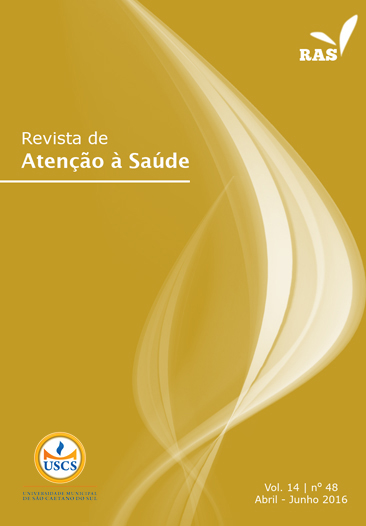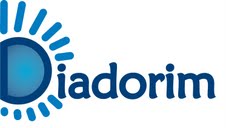Cerebrovascular accident: clinical findings and major complications
DOI:
https://doi.org/10.13037/ras.vol14n48.3685Keywords:
cerebrovascular accident, complications, nursing, elderlyAbstract
Introduction: cerebrovascular accident (CVA) is one of the leading causes of deaths worldwide caused by blockage or rupture of one or more arteries, causing a lack of blood circulation in the brain. Objective: To verify patients clinical conditions and complications of stroke in hospitalized patients. Method: a retrospective, exploratory study, analysing medical records of patients admitted to the inpatient unit, with a clinical diagnosis of ischemic or hemorrhagic stroke, for the period January-December 2011, in a university hospital in Belo Horizonte, state of Minas Gerais. The sample consisted of 314 patients’ medical records . Results: Among the patients that suffered a stroke, 94% had ischemic stroke. The risk factors were identified as: systemic arterial hypertension in 74% of patients, DM in 25% and smoking in 22%. The average hospitalization time was 11 days and 23% of patients had complications associated with the use of invasive devices. The major complications are: urinary tract infection, pressure ulcers and pneumonia. Conclusion: it has become evident that the age, length of stay and the presence of invasive devices are associated with the occurrence of complications, being necessary to decrease length of stay and establish criteria for the use of invasive devices.
Downloads
References
Organização Mundial da Saúde. Manual STEPS de Acidentes Vascular Cerebrais da OMS: enfoque passo a passo para a vigilância de acidentes vascular cerebrais [internet]. Genebra: OMS; 2006 [acesso em 2013 ago 12]. Disponível em: http://pt.scribd.com/doc/46616252/Avc-Livro-Oms
Ministério da Saúde. Portaria 664, de 12 de abril de 2012. Aprova o Protocolo Clínico e Diretrizes Terapêuticas – Trombólise no acidente vascular cerebral isquêmico agudo [internet]. Brasília: Ministério da Saúde; 2012 [acesso em 2013 ago 16]. Disponível em: ftp://ftp.saude.sp.gov.br/ftpsessp/bibliote/informe_eletronico/2012/iels.abr.12/Iels71/U_PT-MS-GM-664_120412.pdf
Rolim CLRC, Martins M. Qualidade do cuidado ao acidente vascular cerebral isquêmico no SUS. Cad saúde pública [periódico na internet]. 2011 [acesso em 2013 jul 19];27(11):2106-16. Disponível em: http://www.scielosp.org/pdf/csp/v27n11/04.pdf
Smeltzer SC, Bare BG. Brunner & Suddarth/ Tratado de Enfermagem médico-cirúrgica. 12. ed. Rio de Janeiro: Guanabara Koogan; 2012.
Gagliardi RJ, Raffin CN, Fábio SRC. Tratamento da fase aguda do acidente vascular cerebral. Projeto Diretrizes. [internet] 2001 [acesso em 2013 ago 12]. Disponível em: http://www.projetodiretrizes.org.br/projeto_diretrizes/010.pdf
Paulo RB, Guimarães TM, Helito PVP, Marchiori PE, Yamamoro FI, Mansur LL, et al. Acidente vascular cerebral isquêmico em uma enfermaria de neurologia: complicações e tempo de internação. Rev Assoc Med Bras [internet]. 2009 [acesso em 2013 abr 25];55(3):313-6. Disponível em: http://www.scielo.br/pdf/ramb/v55n3/v55n3a25.pdf
Ministério da Saúde. Sexo e idade dos pacientes vítimas de AVC no Brasil, no ano de 2011 [internet]. Brasília: Datasus; [acesso em 2013 ago 22]. Disponível em: http://www2.datasus.gov.br/DATASUS/index.php?area=02
Oliveira MPF, Novaes MRCG. Perfil socioeconômico, epidemiológico e farmacoterapêutico de idosos institucionalizados em Brasília, Brasil. Cienc saúde coletiva [periódico na internet]. 2013 [acesso em 2014 jul 19];18(4):1069-78. Disponível em: http://www.scielo.br/pdf/csc/v18n4/20.pdf
Faria CM, Abudab D, Rodrigues CL, Gorios C, Armond JE, Bertagnon JRD, et al. Perfil epidemiológico dos idosos incluídos no programa acompanhante de idosos (PAI). Arq Geriatr Gerontol [periódico na internet]. 2013 [acesso em 2015 maio 25];7(4):253-58. Disponível em: http://sbgg.org.br/publicacoes-cientificas/revista-geriatria-gerontologia
Leite HR, Nunes APN, Corrêa CC. Perfil epidemiológico e qualidade de vida dos pacientes acometidos por acidente vascular encefálico. Arq Ciênc Saúde da UNIPAR [periódico na internet]. 2011 [acesso em 2015 ago 10];15(1):15-21. Disponível em: http://revistas.unipar.br/saude/article/view/3687/2389
Costa VSP, Guimarães PSR, Fernandes KBP, Probst VS, Marques AS, Fujisawa DS. Prevalência de fatores de risco para ocorrência de acidente vascular encefálico em idosos. Fisioter mov [periódico na internet]. 2014 [acesso em 2015 ago. 17];7(4):555-63. Disponível em: http://www.scielo.br/scielo.php?script=sci_pdf&pid=S0103-51502014000400555&lng=en&nrm=iso&tlng=en
Moreno CL, Salinas MP, Pappalardo FR, Rodríguez LL. Prevención de úlceras por presión y lesiones musculoesqueléticas: paciente con ictus. Gerokomos [periódico na internet]. 2012 [acesso em 2013 nov 5];23(1):42-6. Disponível em: http://scielo.isciii.es/pdf/geroko/v23n1/helcos3.pdf
Westendorp WF, Nederkoorn PJ, Vermeij J, Dijkgraaf MG, Beek DV. Post-stroke infection: A systematic review and meta-analysis. BMC neurol online [serial online]. 2011 Set [cited 2015 Sep 20];11-110. Available from: http://www.biomedcentral.com/content/pdf/1471-2377-11-110.pdf
Moreira T, Grujic J, Michel P. Early mobilization out of bed after ischaemic stroke reduces severe complications bub not cerebral blood flow: a randomized controlled pilot trial. Clin rehabil [periódico on-line]. 2012 May [acesso em 10 set. 2015];26(5)451-9. Available from: http://web.b.ebscohost.com/ehost/pdfviewer/pdfviewer?vid=3&sid=fb43d694-dfdd-4224-89cf-d0def7e6a12b%40sessionmgr111&hid=113
Ingeman A, Andersen G, Hundborg HH, Svendsen ML, Johnsen SP. Processes of care and
medical complications in patients with stroke. Stroke [periódico on-line] 2011 Jan [acesso em 2015 ago. 17];42:167-172. Available from: http://stroke.ahajournals.org/content/42/1/167.long
Downloads
Published
Issue
Section
License
Policy Proposal for Journals offering Free Delayed Access
Authors who publish in this magazine agree to the following terms:
- Authors maintain the copyright and grant the journal the right to the first publication, with the work simultaneously licensed under a Creative Commons Attribution License after publication, allowing the sharing of the work with recognition of the authorship of the work and initial publication in this journal.
- Authors are authorized to assume additional contracts separately, for non-exclusive distribution of the version of the work published in this magazine (eg, publishing in institutional repository or as a book chapter), with the acknowledgment of the authorship and initial publication in this journal.
- Authors are allowed and encouraged to publish and distribute their work online (eg in institutional repositories or on their personal page) at any point before or during the editorial process, as this can generate productive changes, as well as increase impact and citation of the published work (See The Effect of Open Access).









